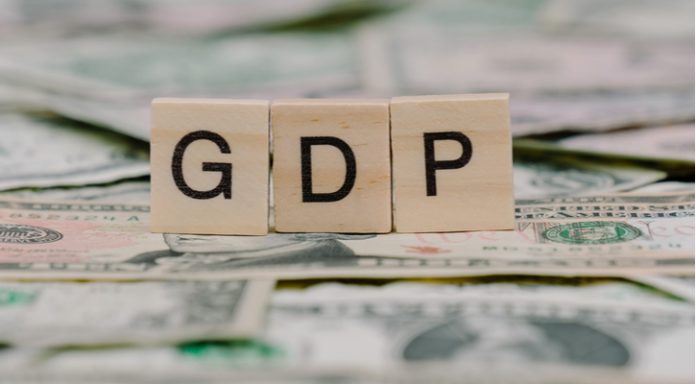- RBA Governor Dr Lowe’s encouraging comments lift Australian Dollar (AUD)
- US Dollar (USD) GDP -5% annually in Q1, vs -4.8% forecast
- Investors shrug off China’s parliament backing HK security law
- At 15:15 UTC, AUD/USD +0.3% at US$0.6645 >> Real time exchange rate
After a slow start the Australian Dollar is moving higher versus its US counterpart, reversing losses from the previous session. The Aussie Dollar US Dollar exchange rate (AUD versus USD) settled on Wednesday -0.47% at US$0.6621.
At 15:15 UTC, AUD/USD is trading 0.3% higher at US$0.6645. This is at the upper end of the daily traded range of US$0.6589 – US$0.6655 following mixed US data and upbeat comments from Reserve Bank of Australia Governor Dr Philip Lowe.
Earlier in the session, Dr Philip Lowe said that it may be possible that the downturn from the coronavirus crisis won’t be as severe as feared, in an upbeat speech. Dr Lowe added that he didn’t think negative interest rates work and that there was limited appetite for them. His comments were supportive of the Aussie dollar.
A more positive sounding Dr Lowe, plus optimism surrounding the easing of lockdown measures across the globe is overshadowing rising US – Chinese tensions after China’s parliament backed security legislation for Hong Kong. The move by China which would make it a crime to undermine Beijing’s authority in the territory provoked comments from US Secretary of State Mike Pompeo questioning Hong Kong’s political independence. Hong Kong is likely to lose its special trade status with the US.
Whilst traders have been able to the shrug these developments off today, this is unlikely to be the end of the story. US – Chinese relations could dampen risk sentiment going forwards.
The US Dollar was under pressure following a mixed bag of data. US GDP contracted by -5% on an annual rate in the first quarter, worse than the -4.8% forecast. Economists continue to expect a far worse outcome in the second quarter of the year.
Durable goods orders showed a substantial decrease in April, falling by -17.2% in April. This beat analysts’ expectations of a -19% decline and came following a -16.6% decline in March. The sharp drop was partly owing to the nosedive in orders for transportation equipment.
Finally, US jobless claims revealed that and additional 2.1 million Americans filled for unemployment benefits, as forecast, bringing the total to over 40 million. As with recent weeks the US Dollar managed to brush these eye watering figures off, moving only mildly lower.





